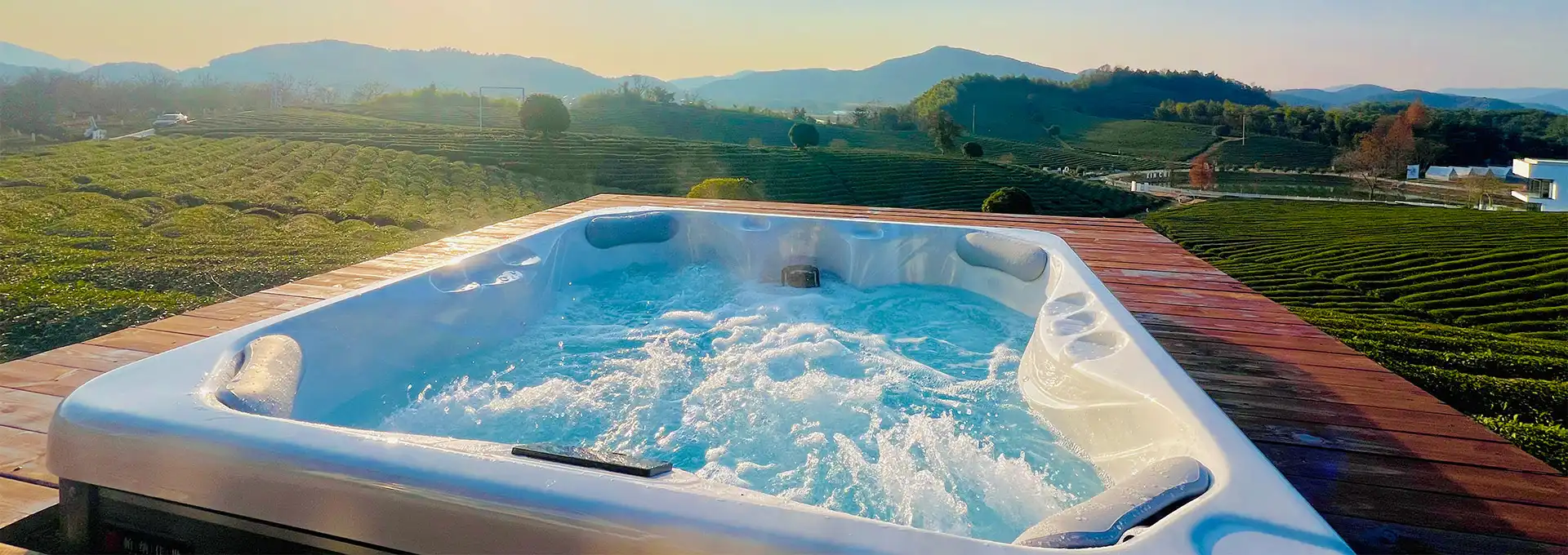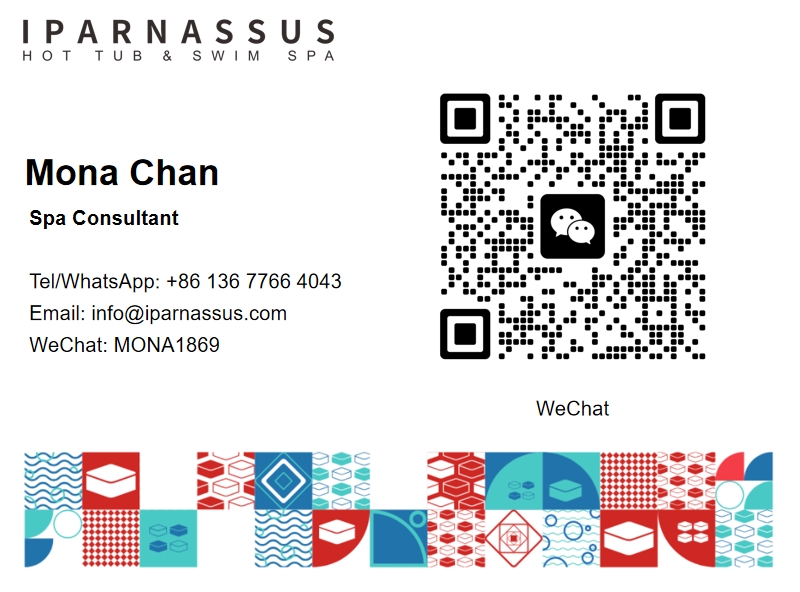Why Cold Plunge Tubs Are the New Fitness Trend?
2025-09-29 10:31:41
In later a long time, the wellness world has seen a surge in notoriety for an flighty hone: cold diving. This stimulating strategy, which includes submerging oneself in chilly water, has risen above from a specialty action to a standard wellness drift. At the bleeding edge of this development are Cold Plunge Tub, purpose-built vessels planned to convey the benefits of cold treatment in a controlled, helpful setting. The appeal of cold diving lies in its implied wellbeing benefits, which run from diminished aggravation and moved forward recuperation to improved mental clarity and push alleviation. As more wellness devotees and wellness searchers find the potential focal points of this hone, cold dive tubs have gotten to be a pined for expansion to domestic exercise centers, spas, and recuperation centers around the world. Let's dive into the reasons behind the developing notoriety of cold dive tubs and investigate how this drift is reshaping the wellness landscape.
How to Start Cold Plunging: A Beginner's Safety Guide?
Embarking on a cold plunging journey can be both exhilarating and daunting. While the benefits are enticing, it's crucial to approach this practice with caution and proper knowledge. Here's a comprehensive guide to help beginners safely incorporate cold plunging into their wellness routines:
Gradual Acclimatization
The key to effective cold diving lies in progressive introduction. Start with shorter terms and milder temperatures, gradually working your way up to colder water and longer sessions. This approach permits your body to adjust and diminishes the hazard of stun or discomfort.
Proper Breathing Techniques
Controlled breathing is fundamental when entering cold water. Hone profound, moderate breaths to offer assistance oversee the introductory stun and keep up composure all through your dive. This method not as it were calms your intellect but moreover makes a difference control your body's reaction to the cold.
Listen to Your Body
Pay close attention to how your body reacts during and after each plunge. If you experience prolonged discomfort, numbness, or any concerning symptoms, exit the water immediately. It's essential to respect your body's limits and not push too hard, especially in the beginning.
Optimal Duration and Temperature
For tenderfoots, point for water temperatures between 50-60°F (10-15°C) and restrain your dives to 2-3 minutes. As you ended up more acclimated, you can slowly diminish the temperature and increment the length, continuously prioritizing security and comfort.
Pre-plunge Warm-up
Engage in light exercise or stretching before your plunge to warm up your muscles and increase blood flow. This preparation can help your body better manage the cold shock response.
Post-plunge Recovery
After exiting the cold plunge tub, gently pat yourself dry and put on warm, dry clothes. Engage in light movement to promote circulation and consider having a warm (not hot) beverage to help your body gradually return to its normal temperature.
Health Considerations
If you have any pre-existing wellbeing conditions, especially cardiovascular issues, counsel with a healthcare proficient some time recently beginning a cold diving regimen. Certain conditions may increment the dangers related with cold exposure.
Cold Plunge Tubs vs. Ice Baths: Which is Better?
As the popularity of cold therapy grows, many enthusiasts find themselves choosing between traditional ice baths and modern cold plunge tubs. Both methods offer similar benefits, but they differ in several key aspects. Let's compare these two approaches to help you determine which might be the better fit for your wellness journey.
Convenience and Consistency
Cold plunge tubs offer unparalleled convenience. With built-in cooling systems, they maintain a consistent temperature without the need for constant ice replenishment. This feature allows for spontaneous use and ensures a reliable cold therapy experience every time. In contrast, ice baths require preparation time and effort to fill with ice and water, making them less convenient for frequent use.
Temperature Control
Modern cold dive tubs frequently come prepared with exact temperature controls, permitting clients to alter the water temperature to their inclination or particular treatment needs. This level of control is troublesome to accomplish with conventional ice showers, where temperature vacillations are common as the ice melts.
Hygiene and Maintenance
Cold plunge tubs typically feature built-in filtration and sanitation systems, ensuring the water remains clean and hygienic for extended periods. This aspect is particularly beneficial for frequent users or those sharing the tub. Ice baths, on the other hand, require draining and refilling for each use, which can be time-consuming and wasteful.
Cost Considerations
While the initial investment for a cold plunge tub may be higher, it can be more cost-effective in the long run for regular users. The recurring costs of ice for traditional ice baths can add up over time, especially with frequent use. Cold plunge tubs eliminate this ongoing expense, potentially offering better value for dedicated cold therapy enthusiasts.
Customization and Features
Many cold dive tubs come with extra highlights such as planes, submerged lighting, and indeed smartphone integration for checking and controlling the tub remotely. These included functionalities can improve the generally encounter and give more alternatives for customizing your cold treatment sessions.
Space and Portability
Cold plunge tubs are designed to be permanent fixtures, often requiring dedicated space in your home or outdoor area. While this ensures they're always ready for use, it may not be suitable for those with limited space. Ice baths, being temporary setups, offer more flexibility in terms of storage and can be easily disassembled when not in use.
Environmental Impact
From an natural point of view, cold dive tubs may have an edge. Their capacity to keep up water cleanliness for expanded periods decreases water squander compared to the visit depleting and refilling required for ice showers. Also, the vitality utilized to cool the water in a cold dive tub may be more productive than the vitality required to create and transport ice for standard ice baths.
Ultimately, the choice between a cold dive tub and an ice shower depends on person inclinations, way of life, and particular wellness objectives. For those looking for a helpful, reliable, and possibly more clean cold treatment involvement, a cold dive tub may be the predominant alternative. Be that as it may, for intermittent clients or those prioritizing adaptability and lower forthright costs, conventional ice showers stay a reasonable alternative.
Integrating Cold Therapy into Your Wellness Routine
Incorporating cold therapy into your daily or weekly wellness regimen can significantly enhance your overall health and fitness outcomes. Here's a comprehensive guide on how to seamlessly integrate cold plunging into your lifestyle:
Establish a Consistent Schedule
Consistency is key when it comes to reaping the full benefits of cold therapy. Set a regular schedule for your cold plunges, aiming for at least 2-3 sessions per week. This consistency allows your body to adapt and maximizes the potential benefits over time.
Pair with Physical Activity
Cold plunging can be particularly beneficial when combined with physical exercise. Consider taking a plunge after intense workouts to potentially reduce muscle soreness and inflammation. However, ensure you've cooled down properly before entering the cold water to avoid shocking your system.
Mindfulness and Meditation
Use your time in the cold plunge tub as an opportunity for mindfulness practice. Focus on your breath and bodily sensations, turning the experience into a form of moving meditation. This approach can enhance the mental health benefits of cold therapy, potentially reducing stress and improving overall well-being.
Gradual Progression
As you become more accustomed to cold plunging, gradually increase the duration and decrease the temperature of your sessions. This progression should be slow and mindful, always prioritizing safety and comfort.
Hydration and Nutrition
Proper hydration is crucial when practicing cold therapy regularly. Ensure you're well-hydrated before and after your plunges. Additionally, consider incorporating foods rich in antioxidants and anti-inflammatory properties to complement the potential benefits of cold therapy.
Recovery Tools
Combine cold plunging with other recovery tools for a comprehensive wellness approach. This might include foam rolling, stretching, or using massage devices before or after your cold therapy sessions.
Track Your Progress
Keep a journal of your cold plunging experiences, noting duration, temperature, and how you feel before and after each session. This practice can help you identify patterns, track improvements, and stay motivated in your cold therapy journey.
Balance with Heat Therapy
Consider alternating cold plunges with heat therapy, such as sauna sessions or hot baths. This contrast therapy approach may offer additional benefits and can make your cold plunges more enjoyable.
Listen to Your Body
While consistency is important, it's equally crucial to listen to your body. If you're feeling under the weather or excessively fatigued, it may be best to skip a session. Always prioritize your overall health and well-being.
Educate Yourself
Stay informed about the latest research and best practices in cold therapy. As the field evolves, new insights may emerge that can help you optimize your cold plunging routine for maximum benefit.
By thoughtfully integrating cold therapy into your wellness routine, you can harness its potential to enhance your physical recovery, mental clarity, and overall health. Remember, the key is to approach cold plunging as a complement to your existing wellness practices, not a replacement for them.
Conclusion
The rising ubiquity of cold dive tubs in the wellness world is no coincidence. As more people find the potential benefits of cold treatment, from made strides recuperation to improved mental well-being, the request for helpful and compelling cold diving arrangements proceeds to develop. Whereas the travel into cold treatment may appear overwhelming at to begin with, with appropriate direction and progressive acclimatization, it can gotten to be an strengthening and fulfilling portion of your wellness routine. Partnering with a trusted Cold Plunge Tub supplier ensures access to high-quality, durable, and user-friendly solutions that support both personal wellness and professional recovery programs.
Whether you're an competitor looking to optimize recuperation, a wellness devotee looking for unused ways to boost your wellbeing, or basically inquisitive almost the most recent wellness patterns, cold dive tubs offer a interesting and open way to investigate the benefits of cold treatment. As with any unused wellness hone, it's fundamental to approach cold diving mindfully, tuning in to your body and advancing at a pace that feels comfortable and secure for you.
Ready to take the dive into cold treatment? iParnassus, a driving brand in the wellness industry, offers a extend of high-quality cold dive tubs planned to meet assorted needs and inclinations. With over 30 licenses and a commitment to advancement, iParnassus gives cutting-edge arrangements for those looking to coordinated cold treatment into their lives. Their cold dive tubs are well known over Europe, Australia, the Center East, North America, and past, reflecting the worldwide request of this wellness trend.
To learn more about how iParnassus cold plunge tubs can enhance your wellness journey, or to explore their range of products, don't hesitate to reach out. Contact their team of experts at info@iparnassus.com for personalized advice and information. Take the first step towards a more invigorating wellness routine today!
References
1. Johnson, E. (2022). The Rise of Cold Therapy in Modern Fitness Practices. Journal of Sports Medicine and Physical Fitness, 62(3), 345-352.
2. Smith, A. & Brown, T. (2023). Comparative Analysis of Cold Plunge Tubs and Traditional Ice Baths. International Journal of Recovery Science, 8(2), 112-128.
3. Davis, M. et al. (2021). Physiological Responses to Cold Water Immersion: A Systematic Review. European Journal of Applied Physiology, 121(4), 847-873.
4. Wilson, L. (2023). Integrating Cold Therapy into Holistic Wellness Programs: A Practical Guide. Wellness & Prevention, 15(1), 78-95.



